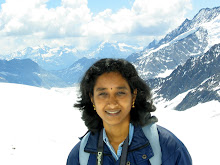Dollu Kunitha
Dollu is a percussion instrument which is used in the group dance of the "Kuruba's" community in North Karnataka area. A group of 12 dancers beat the drum and dance to its different rhythms, which are controlled and directed by a leader with cymbals. Slow and fast rhythms alternate and the group weaves varied patterns. Woven around the presiding deity of Beereshwara, chiefly worshipped by the shepherd clan, who comes under the caste of Kurubas, also called Halumathasthas, it presents both entertainment and spiritual edification. 'Dollu-Kunitha' is popular with the kurubas of 'Beereshvara Sampradaya'.

In all temples of Beereshwara, it is a religious practice to hang a "Dollu" in the premises of the temple by means of thick ropes tied up to the hooks fixed in the ceiling. Every time pooja is offered to Beereshwara, the custom demands that there should be an instantaneous beating of the Dollu as an accompanying act of worship.

Origin of Dollu
Origin of 'Dollu' is traced to the divine couple Shiva and Parvathi. Here’s how the story goes: To kill time, Shiva and Parvathi played games. They bet as well. The bet was that the loser was to leave Kailasa to live anonymously in 'Bhuloka'. Shiva loses and he moved into a cave in Bhuloka and stayed there in the form of a stone.

'Mayamurthi' Shiva's ardent loyalist guards the cave. As years pass by, Parvathi fed up of managing the universe sends 'Vayu' in search of Shiva but in vain. Narada locates the cave, kills Mayamurthi and forces 'Shiva' to return to Kailasa. Shiva unwilling to leave behind the dead body of his trusted and beloved guard, makes Dollu out of the dead body and carries it to Kailasa! Hence 'Dollu' is popular among Shaivites. The 'Dollu' used by the Kurubas is made of either sheep or goat skin. It is fit tightly to a frame made of honne or mango tree wood.

Usually, the troupe consists of about a dozen artistes as dancing partners. The background has tala, tappadi, trumpets, gong and flute, raised to a high-pitched tenor. These instruments are used to reinforce the rich vibrations of Dollu. A miniature model of Dollu, easy to carry in hand, and handle it for beating – is often employed while singing a distinct class of songs-Dollu Songs/Drum Songs.

The songs that come under this category are referred to as 'kaipattu' – songs that just beat (no stick is involved but the incessant play of the hands all the time-hence called Kaipattu). Stressing the importance of Revanasiddeswara, they sing in his glory, giving an altogether different ring of intonation as distinguishable from the rest of other kinds of folk singers. Their ancestral pride is something, unconditional when they take to singing, tracing the origin of their genealogy, evolution and development over the ages. This expressive literature in its oral tradition goes by the legend called 'Halumatha (Kuruba) Purana'.

Mythological, historical and social themes are narrated by the chief narrator with the powerful musical accompaniment consisting of the Dollu, the cymbals and the flute providing appropriate musical setting to the narration. Messages on loan melas, small savings, adult education and population control programmes have been integrated into this folk dance.

In the year 1987 the "Dollu" dance troupe participated in the U.S.S.R. festival under the leadership of K.S.Haridas Bhat, toured two and half month traveled and presented glorious performances in Moscow, Leningrad, Vibrog Archangel, Murmansk, Pskov, Novogorod and Tashkent.
Labels: Folk Dance, Karnataka



































